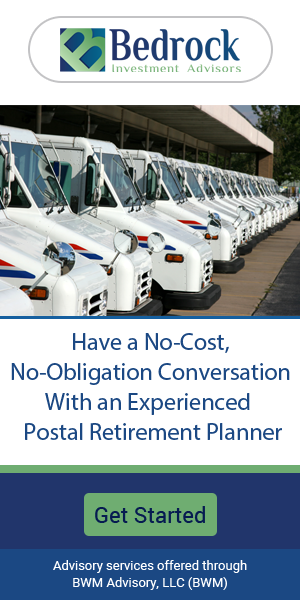Key Takeaways
- Start Planning Early for Maximum Flexibility: Federal workers who start planning their retirement early have more options and can take advantage of federal benefits to secure a comfortable future.
- Utilize Available Federal Programs Wisely: Leveraging federal programs like the Thrift Savings Plan (TSP) and Social Security can significantly boost retirement income when used effectively.
Top Retirement Tips for Federal Workers—The Simple Moves That Could Make All the Difference Later On
Federal workers have a unique set of retirement benefits and options that can pave the way for a secure future. However, with numerous programs, rules, and opportunities to navigate, it’s essential to have a solid strategy in place. This guide outlines the top tips to help federal workers optimize their retirement, ensuring their future is comfortable and secure.
Prioritize Early Savings: The Power of Compound Interest
- Also Read: The Best FEHB Plans for 2025: Which One Fits Your Lifestyle and Budget the Best?
- Also Read: Special Retirement Options for FAA and LEO Employees: Are You Taking Advantage of What’s Available?
- Also Read: Federal Employee Benefits You Didn’t Know Could Give Your Wallet a Serious Boost in Retirement
Federal workers have access to the Thrift Savings Plan (TSP), one of the most effective tools for building a retirement nest egg. The earlier you start contributing, the more time your investments have to grow. Even small, consistent contributions can result in a substantial balance over time due to the magic of compound interest.
Contributing the maximum amount allowable each year is an excellent strategy to make the most of your TSP. By starting early and increasing contributions as income rises, federal workers can optimize their retirement savings and take full advantage of government matching contributions.
Understand and Plan for Your Retirement Age
Understanding the retirement age requirements under the Federal Employees Retirement System (FERS) is critical. Federal workers can retire as early as their Minimum Retirement Age (MRA), which ranges from 55 to 57, depending on the year of birth. However, to receive full benefits, you typically need to retire at age 62 with at least 20 years of service or at age 60 with 20 years.
Knowing these thresholds helps workers plan effectively. Retiring early may reduce benefits, but retiring later with additional years of service can increase annuity payments. Assessing your timeline carefully will provide you with options, whether you aim for early retirement or prefer to work longer for enhanced benefits.
Diversify Retirement Income Sources
Federal workers should not rely solely on their government pension. Diversifying income streams is essential for a well-rounded retirement strategy. The TSP is a crucial component, but so are Social Security benefits and personal savings or investments.
Federal employees under FERS are eligible for Social Security benefits in addition to their federal pension. Workers should aim to maximize these benefits by strategically deciding when to claim. Waiting until full retirement age or even delaying benefits until age 70 can increase monthly payments significantly. Combining these benefits with personal investments outside federal programs ensures multiple income sources and minimizes financial risks.
Maximize the Thrift Savings Plan (TSP)
The TSP is one of the most advantageous retirement savings plans available. Federal workers should not only contribute regularly but also review their investment options periodically. The TSP offers several funds, including the G Fund (Government Securities Investment Fund) for conservative investors and the C Fund (Common Stock Index Investment Fund) for those seeking growth.
Choosing a balanced portfolio based on risk tolerance and retirement timeline is key. As you get closer to retirement, gradually shifting to more conservative funds can help protect your savings from market volatility. Federal employees age 50 and older can also take advantage of catch-up contributions, which allow them to contribute beyond the standard limit, further boosting their retirement accounts.
Take Advantage of Catch-Up Contributions
Catch-up contributions are a valuable tool for federal workers aged 50 and above. The federal government allows older workers to contribute extra amounts to their TSP accounts beyond the regular contribution limits. These additional contributions can significantly increase retirement savings, particularly if you start making them as soon as you become eligible.
By maxing out these contributions, federal workers can close any gaps in their retirement savings and take full advantage of the tax benefits offered by the TSP. This strategy is particularly effective for those who may have started their retirement savings later in their careers.
Be Smart About FEHB and Medicare Coordination
Federal Employee Health Benefits (FEHB) provide comprehensive coverage for federal retirees, but planning is necessary to manage costs effectively. Many federal workers choose to keep FEHB coverage into retirement, especially if they coordinate it with Medicare.
At age 65, federal retirees become eligible for Medicare, and combining it with FEHB can provide robust healthcare coverage. However, understanding the premiums and the timing of enrollment is crucial to avoid unnecessary expenses or gaps in coverage. Evaluating the costs and benefits of keeping both FEHB and Medicare or choosing one over the other based on personal health needs and financial situation can save retirees substantial money in the long term.
Plan for Cost-of-Living Adjustments (COLAs)
Federal retirees receive annual Cost-of-Living Adjustments (COLAs) that increase their pensions to keep up with inflation. While these adjustments provide some protection against rising costs, they may not fully cover inflation over time. Planning for additional sources of income or increasing savings can help fill the gap if inflation outpaces COLAs.
COLAs are determined based on the Consumer Price Index (CPI), and fluctuations in the economy can impact these adjustments. Federal workers nearing retirement should factor in this variability when estimating their retirement budget and making decisions about when to retire.
Protect Your Loved Ones with Survivor Benefits
Federal employees have the option to elect survivor benefits, ensuring that their spouse or other designated beneficiaries receive a portion of their pension after they pass away. This election, however, comes with a cost—reducing the employee’s pension while alive. Balancing this option with other financial considerations is crucial for comprehensive retirement planning.
Federal workers should assess their overall financial situation, including life insurance policies and other investments, to determine if electing survivor benefits is the best choice. Careful consideration and planning can provide peace of mind, knowing that loved ones will have financial security.
Leverage Financial Planning Resources
The federal government provides numerous resources to help employees plan their retirement, such as seminars and online tools. Taking advantage of these resources can provide insights and personalized information. Calculators, like the Federal Ballpark Estimate, can be especially helpful for projecting future retirement income and expenses.
Additionally, consulting with a financial advisor who specializes in federal benefits can be a valuable investment. They can help navigate the complexities of the federal retirement system, providing guidance on topics like TSP management, Social Security optimization, and FEHB coordination. Engaging with an expert ensures a tailored approach that maximizes federal benefits while aligning with personal financial goals.
The Path to a Comfortable Retirement
Planning for retirement as a federal worker involves understanding the programs and options available and making informed decisions to optimize those benefits. By focusing on early savings, diversifying income sources, maximizing the TSP, and coordinating health benefits, federal workers can build a secure and comfortable retirement. Staying informed, utilizing available resources, and planning strategically will make a significant difference in achieving financial stability and peace of mind in retirement.













